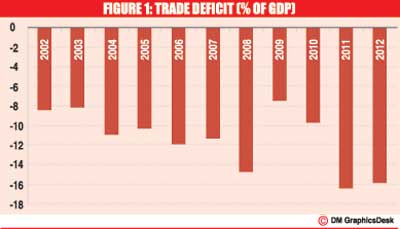07 Aug 2013 - {{hitsCtrl.values.hits}}
.jpg) Sri Lanka has high trade deficits. And, instead of shrinking, they are increasing over the years. The current government policy, based on import substitution, will not be able to solve this serious problem.
Sri Lanka has high trade deficits. And, instead of shrinking, they are increasing over the years. The current government policy, based on import substitution, will not be able to solve this serious problem. being done about it is not working and what will work is not being done.
being done about it is not working and what will work is not being done. Picking the wrong battle
Picking the wrong battle.jpg) ability to convert industries supported by import substitution to become export oriented.
ability to convert industries supported by import substitution to become export oriented.
26 Nov 2024 9 minute ago
26 Nov 2024 22 minute ago
26 Nov 2024 1 hours ago
26 Nov 2024 2 hours ago
26 Nov 2024 2 hours ago